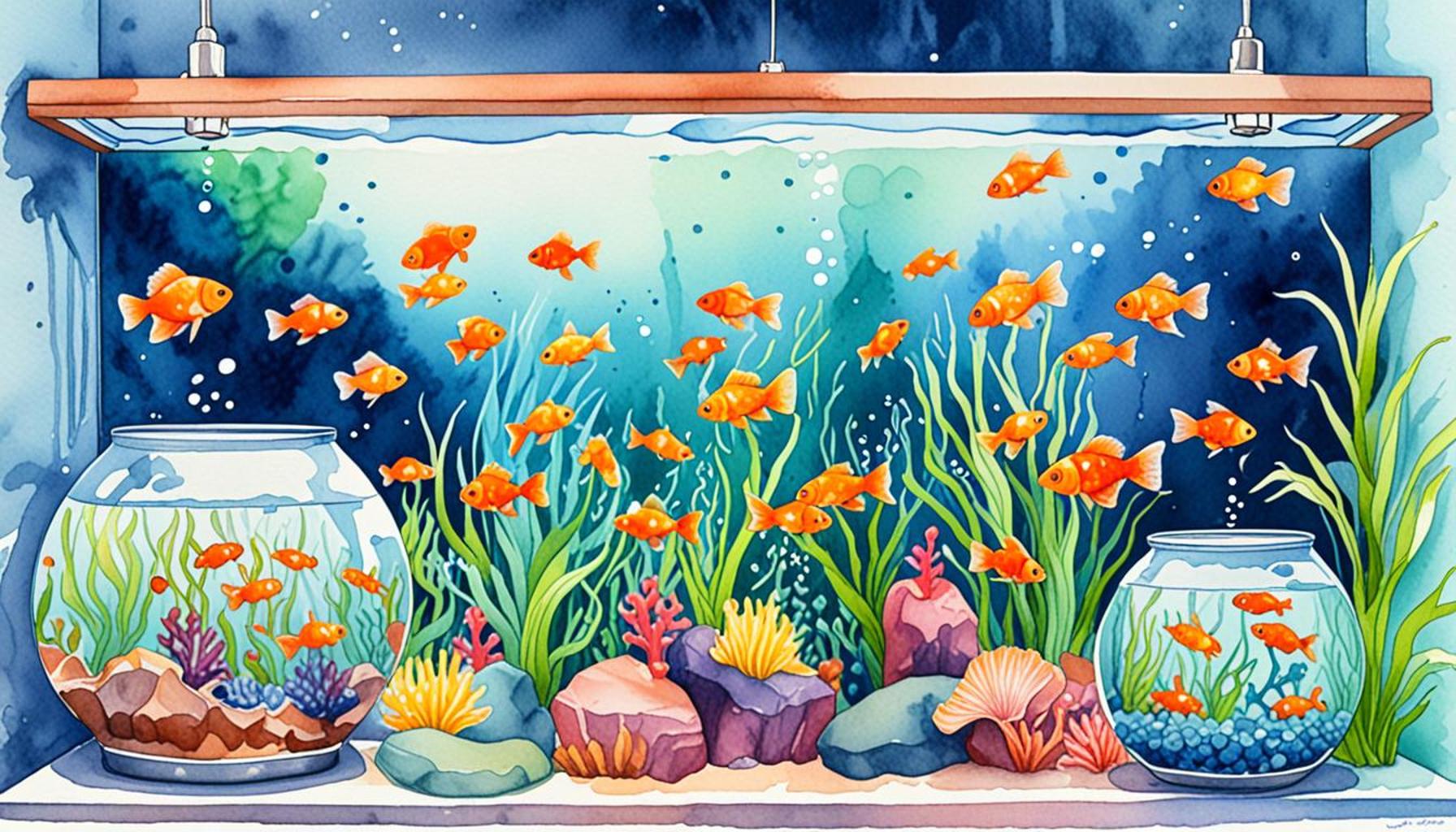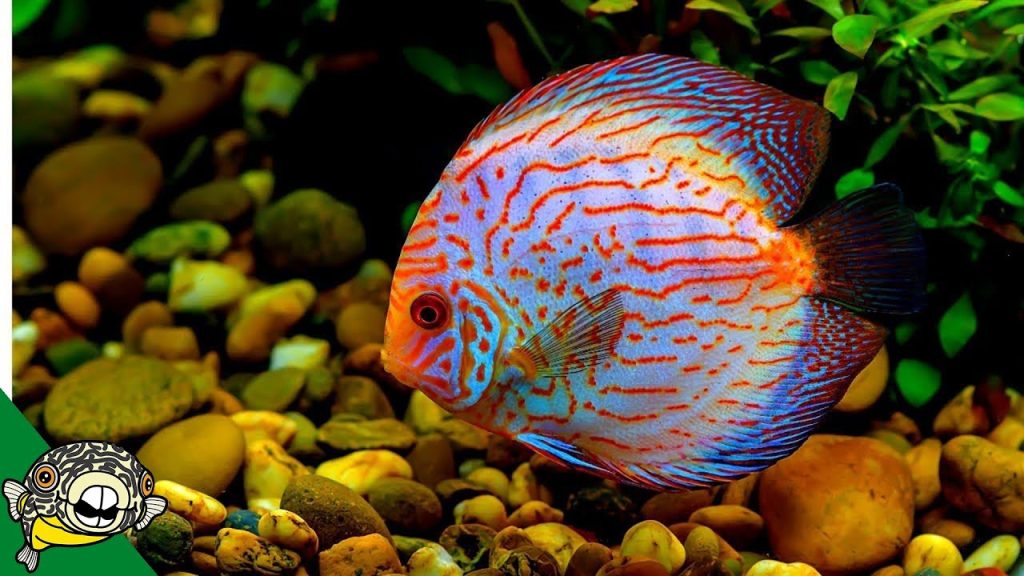Ultimate Guide to Ornamental Fish Care in Home Aquariums

Understanding the Essentials of an Ornamental Fish Aquarium
Caring for ornamental fish in home aquariums can be an incredibly rewarding experience, offering not just visual beauty but also a sense of companionship. However, it’s crucial to realize that these vivid aquatic inhabitants require meticulous attention to thrive. This guide will provide you with comprehensive insights into crafting a serene and healthy aquatic environment for your fish friends.
Water Quality
Water quality stands as the cornerstone of a successful aquarium setup. Fish are highly sensitive to changes in their habitat, and the quality of water in their tank can significantly affect their health and well-being. Regular testing for parameters such as pH levels, ammonia, nitrites, and nitrates is essential. A pH level between 6.5 and 7.5 is generally ideal for most freshwater fish. Using a good quality water conditioner can eliminate harmful chemicals and chloramines found in tap water. Additionally, establishing a reliable filtration system will help maintain optimal water conditions by removing waste and providing necessary aeration.
Feeding
Understanding the dietary needs of your fish is critical for their growth and vitality. Each species has specific food preferences and nutritional requirements. For instance, Betta fish, known for their striking colors and unique personalities, thrive on a diet high in protein—pellets formulated specifically for bettas are often recommended. On the other hand, Guppies, which are hardy and easy to care for, enjoy a varied diet including high-quality flakes and live or frozen foods. For smaller species such as Tetras, a combination of flakes, micro-pellets, and small live foods can keep them active and social. It is vital to feed the right amount and avoid overfeeding, which can lead to poor water quality and health issues.
Creating the Right Tank Environment
The tank environment plays a significant role in the happiness of your fish. Adding substrate, plants, and decorations can create a habitat that mimics their natural environment, promoting better mental health and reducing stress. Live plants not only provide hiding spots and reduce stress but also enhance water quality by absorbing nitrates. Popular plants like Java fern and Anubias are not only easy to maintain but also add a vibrant touch to the aquarium. Moreover, the placement of rocks, driftwood, and other decorations should encourage exploration and cohesion among the fish, especially for schooling species like tetras.

Conclusion
Engaging in the art of aquarium maintenance can be both peaceful and enriching. Whether you are new to the hobby or have years of experience, this guide aims to equip you with essential knowledge about equipment essentials, common diseases to watch for, and best practices that foster a healthy environment for your aquatic companions. As you delve into the world of ornamental fish care, you will not only learn about their fascinating behaviors but also discover the joys of nurturing an aquatic ecosystem right in your own living space.
CHECK OUT: Click here to explore more
Setting Up Your Aquarium: A Foundation for Success
A successful ornamental fish aquarium begins with careful planning and setup. Understanding how to create an ideal space for your aquatic pets is essential, as it lays the groundwork for their health and happiness. The following key components should be considered when establishing your aquarium.
Choosing the Right Size Aquarium
The first step in setting up your aquarium is selecting the appropriate size. An aquarium that is too small can lead to overcrowding, increased waste buildup, and heightened stress for your fish. A general rule is to allocate one inch of fish per gallon of water, though this can vary depending on species. The most effective home aquariums start at a minimum of 20 gallons, providing ample space for fish to swim and thrive. Moreover, larger tanks are easier to maintain due to their ability to dilute toxins more effectively than smaller tanks.
Essential Equipment
After determining the size of your aquarium, you will need to equip it properly to ensure a stable and healthy environment. Here is a concise list of essential equipment:
- Filtration System: A reliable filter is crucial to keep the water clean and free from harmful substances. Choose a filter that is rated for the size of your tank.
- Heater: Many ornamental fish thrive in tropical temperatures ranging from 75°F to 80°F. An adjustable heater is important to maintain the proper climate.
- Lighting: Proper lighting not only enhances the aesthetics of your aquarium but also supports the growth of live plants, which help maintain water quality.
- Test Kits: Regularly testing water parameters with a quality kit will help you monitor pH, ammonia, nitrite, and nitrate levels effectively.
Substrate Selection
The choice of substrate can have a profound impact on both the appearance of your aquarium and the wellbeing of your fish. Gravel, sand, and specialized substrates like fluorite are popular options, each offering unique benefits. For example, a thin layer of sand can be ideal for species like corydoras catfish, which thrive when foraging along the bottom. On the other hand, gravel allows for better water flow and is suitable for planted tanks. Aim for a substrate that provides an aesthetic appeal while promoting activity and comfort for your fish.
Tank Cycling
Before introducing fish to your new aquarium, it is vital to go through the process of cycling your tank. This refers to establishing beneficial bacteria that convert harmful ammonia from fish waste into less toxic nitrate. There are two primary methods for cycling your tank:
- Fishless Cycling: This method involves adding ammonia to the tank to stimulate bacterial growth without putting any fish at risk.
- Fish-in Cycling: This involves adding a small number of hardy fish to the tank while closely monitoring water parameters to minimize stress.
Regardless of the method you choose, ensure that your tank is adequately cycled before introducing more delicate species to create a safe and sustainable habitat.
Acquiring knowledge about your aquarium’s essentials sets you on the path to creating a thriving home for your ornamental fish. As you refine your setup process, the joy of keeping and caring for your aquatic friends will only increase, paving the way for a vibrant and dynamic underwater world in your living space.
| Category | Benefits |
|---|---|
| Water Quality | Maintaining proper water quality is crucial; it prevents diseases and ensures a healthy environment for fish. |
| Tank Mates | Selecting compatible tank mates enhances social interaction and reduces aggression, promoting a peaceful aquarium. |
| Diet and Nutrition | Providing a balanced and varied dietetary plan is essential for growth, color enhancement, and longevity of fish. |
| Aquascaping | An aesthetically pleasing aquascape not only improves the look of your aquarium but also offers natural hiding spots for fish, reducing stress. |
Keeping ornamental fish in home aquariums can be a rewarding endeavor, but it comes with its own set of responsibilities that every aquarist should embrace. One cannot overlook the importance of water quality; it is the foundation of your fish’s health. Regular testing and maintenance play a pivotal role in creating a sustainable habitat. Special care should also be directed towards choosing tank mates. Various species exhibit different behavior patterns, and understanding them can prevent territorial battles.Moreover, your fish’s diet and nutrition significantly impact their growth and overall appearance. Different fish species require specific types of food to thrive, and incorporating variety can prevent dietary deficiencies. Lastly, a captivating aquascape does not just serve aesthetic purposes; it provides essential shelters and territories that promote natural behaviors, making your aquarium not just a visual display but a thriving ecosystem. Through thoughtful management and continuous learning, you can elevate your aquarium experience to greater heights.
SEE ALSO: Click here to read another article
Maintaining a Healthy Environment for Your Fish
Once you have successfully set up your aquarium, ongoing maintenance becomes crucial for keeping a thriving environment for your ornamental fish. Regular checks and practices will ensure that your fish remain vibrant and healthy, while also enhancing the overall aesthetic appeal of your aquatic paradise.
Water Quality Management
Good water quality is the backbone of any successful aquarium. Maintaining the right balance involves frequent monitoring and adjustments. The primary factors to consider include pH level, ammonia, nitrite, and nitrate. Each species of fish has its own specific needs regarding these parameters. For example, most freshwater species prosper in a pH range of 6.5 to 7.5. Regular water changes—typically 10% to 15% of the tank volume weekly—are essential to dilute waste and toxins, while also replenishing vital minerals.
Temperature Regulation
It is equally important to maintain the right temperature in your aquarium to promote the health of your fish. Investing in a reliable heater with a thermostat can help in achieving and maintaining optimal conditions. Tropical fish species, such as neon tetras and angelfish, thrive in warmer temperatures, while others, like goldfish, may prefer cooler waters. Always keep a thermometer in the tank to monitor fluctuations and avoid any stress-related issues for your fish.
Feeding Your Fish
The diet you provide your ornamental fish plays a significant role in their overall health. Each species may require a specialized diet ranging from flakes, pellets, and frozen foods to live options. It is crucial to research the specific dietary requirements of your fish. For instance, herbivorous species like plecos thrive on algae-based foods, while carnivorous fish such as cichlids benefit from protein-rich offerings. Overfeeding can lead to health issues and excessive waste, so adhering to a regimented feeding schedule is important—generally, once or twice daily feeds of small portions is sufficient.
Tank Maintenance Tasks
Maintaining a clean and functional tank involves various routine tasks that keep your aquarium healthy:
- Cleaning the Tank: Regularly scrub the glass and decorations to prevent algae buildup. Use a magnet cleaner or algae scraper, ensuring that you do not disrupt the fish while cleaning.
- Filter Maintenance: Clean or replace filter media as needed to ensure optimal water flow and filtration. Depending on your filter type, this may be weekly or monthly.
- Monitoring Fish Behavior: Keep an eye on your fish’s activity levels. Sudden changes in behavior, such as hiding or erratic swimming, can be indicators of illness or environmental stress.
Preventing Common Diseases
Despite your best efforts, ornamental fish can still fall victim to various diseases. Understanding how to recognize and prevent common ailments is essential. Ichthyophthirius multifiliis, known as “ick,” is a prevalent parasitic infection that manifests as white spots on fish. Maintaining optimal water parameters and reducing stress can help prevent outbreaks. Regularly quarantining new fish can also thwart the introduction of diseases into your established setup.
By emphasizing water quality, temperature regulation, proper feeding practices, routine maintenance, and disease prevention, you can cultivate a vibrant ecosystem that supports the beauty and vitality of your ornamental fish. As you deepen your understanding of these facets, you’ll discover the immense joy that comes from nurturing these aquatic companions.
SEE ALSO: Click here to read another article
Conclusion: Embracing the Joy of Ornamental Fish Care
In conclusion, mastering the art of ornamental fish care in home aquariums is both an engaging hobby and a fulfilling responsibility. By understanding and consistently managing key elements such as water quality, temperature, and diet, you create a dynamic environment where your aquatic friends can thrive. This guide has traversed essential practices that highlight the importance of routine maintenance and disease prevention, ensuring that your fish remain lively and healthy.
The beauty of keeping ornamental fish goes beyond their visual appeal; it nurtures a connection with nature right in the comfort of your home. Every shimmering scale contributes to a miniature ecosystem, which requires delicate balance and attentive care. Therefore, do not underestimate the profound impact that a little extra effort in your aquarium can have, not just on the health of your fish but also on your well-being and peace of mind.
As you implement these strategies, take the opportunity to experiment with different species, aquascaping techniques, and filtration systems. This will deepen your understanding and appreciation for aquatic life. Furthermore, joining local fish-keeping communities can provide you with invaluable insights, tips, and support as you progress on this exciting journey. Be curious, learn continuously, and remember: a vibrant aquarium is a reflection of the dedicated efforts you invest in it.
With commitment and enthusiasm, you can transform your aquarium into a flourishing underwater paradise. Dive into the world of ornamental fish care today, and discover the endless beauty and intrigue it has to offer.



